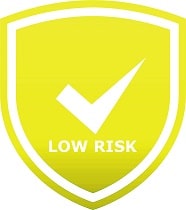Is Breast Reduction Mammoplasty Safe in Breastfeeding
Question
I am a breastfeeding mother and i want to know if it is safe to use Breast Reduction Mammoplasty? Is Breast Reduction Mammoplasty safe for nursing mother and child? Does Breast Reduction Mammoplasty extracts into breast milk? Does Breast Reduction Mammoplasty has any long term or short term side effects on infants? Can Breast Reduction Mammoplasty influence milk supply or can Breast Reduction Mammoplasty decrease milk supply in lactating mothers?
Breast Reduction Mammoplasty lactation summary

- DrLact safety Score for Breast Reduction Mammoplasty is 3 out of 8 which is considered Low Risk as per our analyses.
- A safety Score of 3 indicates that usage of Breast Reduction Mammoplasty may cause some minor side effects in breastfed baby.
- Our study of different scientific research indicates that Breast Reduction Mammoplasty may cause moderate to no side effects in lactating mother.
- Most of scientific studies and research papers declaring usage of Breast Reduction Mammoplasty low risk in breastfeeding are based on normal dosage and may not hold true for higher dosage.
- While using Breast Reduction Mammoplasty We suggest monitoring child for possible reactions. It is also important to understand that side effects vary largely based on age of breastfed child and time of medication in addition to dosage.
- Score calculated using the DrLact safety Version 1.2 model, this score ranges from 0 to 8 and measures overall safety of drug in lactation. Scores are primarily calculated using publicly available case studies, research papers, other scientific journals and publically available data.
Answer by Dr. Ru: About Breast Reduction Mammoplasty usage in lactation
The surgery for reduction of the breast with preservation of the pedicle is the one with the highest probability of conservation of innervation of nipple and hence the sensibility of that area, as well as the integrity of milk ducts. Even though, there is still five times more probability of lactation failure among women who undergo this kind of surgery with 2/3 of women having less nipple sensibility and more troubles while breastfeeding. Mean duration of lactation among treated women was 5 days versus 3 months among those who did not undergo a surgery (two months versus six months for mixed lactation). At date of latest review no study was found that has shown significant differences on functional results of breastfeeding, among various type of surgical techniques for preservation of the pedicle (upper pedicle, lower pedicle or both with different orientation of the scar) The free-graft technique hampers a big deal the achievement of exclusive breastfeeding, since it cuts the innervation and glandular ducts. As it has been seen, at start, the possibility of breastfeeding should not be excluded, since after years reinnervation and partial recanalization may occur, although it rarely will be exclusive, because of the lost of a lot of sensibility that would ensure the functioning of the neuro-endocrine reflex that is instrumental for milk production. The normal secretion of colostrum at the end of pregnancy does not guarantee the success of lactation since it is not related to the neuro-endocrine reflex (instead it is indicative of a possible recanalization of ducts) Liposuction techniques have less untoward effects on lactation but they are limited to certain indications. Several papers reporting results that were published by plastic surgeons failed to find a relationship between reduction mammoplasty and breastfeeding troubles. They assumed that the reason for breastfeeding failure is partly due to pessimistic opinions of health care givers who are in charge of those patients. The plastic surgeon should adequately inform the women who are willing to breastfeed their offspring after a reduction mammoplasty.
Alternate Drugs for Disease, Disorder & other Mother´s Conditions.
Maternal Anemia(Safe)
Maternal Rheumatoid Arthritis(Low Risk)
Maternal Brucellosis(Low Risk)
Cancer(Unsafe)
Maternal Candidiasis(Low Risk)
Anthrax(Safe)
Maternal Cardiopathy(Low Risk)
Maternal Cold(Safe)
Cesarean Section(Safe)
Maternal Cytomegalovirus(Safe)
Chlamydia(Safe)
Maternal Depression(Low Risk)
Maternal Diabetes Mellitus(Low Risk)
Drug Addction(Dangerous)
Pregnancy(Safe)
Maternal Epilepsy(Low Risk)
Maternal Multiple Sclerosis(Low Risk)
Maternal Phenylketonuria(Safe)
In Vitro Fertilization(Low Risk)
Maternal Cystic Fybrosis(Low Risk)
West Nile Fever (WNF)(Low Risk)
Maternal Galactosemia(Safe)
Maternal Acute Gastroenteritis(Low Risk)
Giardia Lamblia(Safe)
Maternal Gonorrhea(Low Risk)
Maternal Herpes Simplex(Unsafe)
Maternal Hyperprolactinemia(Low Risk)
Maternal Hyperthyroidism(Low Risk)
Maternal Hypothyroidism(Safe)
inflammatory bowel disease (maternal)(Low Risk)
Maternal Surgery Intervention(Low Risk)
Maternal Leprosy(Low Risk)
Maternal Lyme Disease(Safe)
Augmentation Mammoplasty(Low Risk)
Maternal Mastitis(Safe)
Ménière(Low Risk)
Menses(Safe)
Migraine(Safe)
Maternal Myopia(Safe)
Maternal Otosclerosis(Safe)
Maternal Psychotic Disorder(Dangerous)
Maternal Rabies Infection(Low Risk)
Maternal Rubella(Safe)
Maternal Measles(Low Risk)
Vaginal Dryness(Safe)
Maternal Aids(Unsafe)
Maternal Syphilis(Low Risk)
Botulinum Toxin(Low Risk)
Maternal Toxoplasmosis(Safe)
Maternal Transplant(Unsafe)
Maternal Trichomoniasis(Safe)
Maternal Tuberculosis(Low Risk)
Maternal Varicella(Low Risk)
Maternal T-Cell Leukemia/Lymphoma 1(Dangerous)
Maternal Htlv-Ii Infection(Dangerous)
Narcolepsy(Low Risk)
Acne(Safe)
Hepatitis E(Low Risk)
Zika Virus Infection(Safe)
